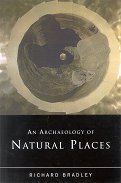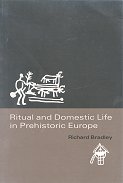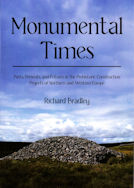The main body of the book consists of a series of chapters, chronologically arranged, each of which examines one of the main phases of British prehistory through detailed discussion of a key theme. There arc five such themes: the importance of ancestry among the earliest farmers; the production and exchange of fine artefacts before the adoption of metals; the importance of elaborate monuments and burials during the Neolithic and Bronze Age periods; the use and deposition of rich metalwork; and, finally, the changing scale of political relations during the late prehistoric period. These thematic chapters are followed by a discussion which draws these separate strands together in an account of our prehistory as a whole. Throughout, Richard Bradley’s emphasis is on the development and maintenance of power. This is an important development in the study of prehistory, since modern archaeologists have been extremely wary of addressing themselves to the social implications of their data. Indeed this is one of the first books to be concerned specifically with the character of prehistoric society in Britain. Yet the issues which Mr Bradley examines systematically here are the very issues which must have mattered most to the people archaeologists are studying.









